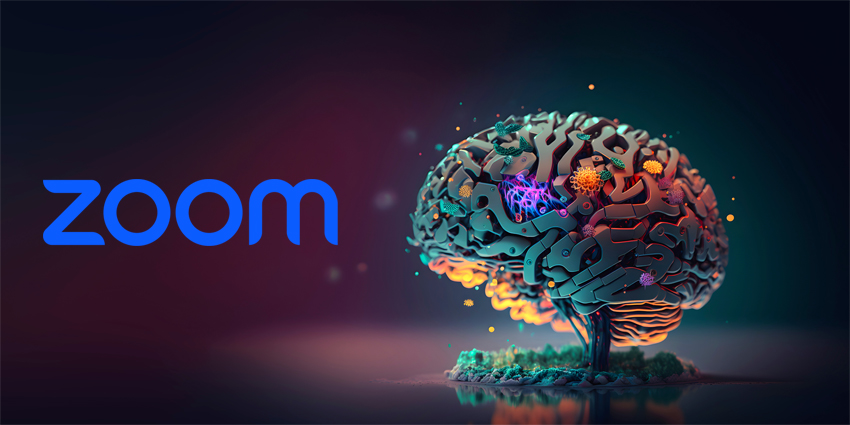The hype around AI in communications, particularly the contact center, is at an all-time high. The technology promises to streamline operations, improve customer service, and increase revenue. It’s also badly needed since many customer interactions with the contact center are generally rated as ‘poor’ to ‘fair.’
These less-than-stellar interactions typically happen because contact centers are loaded with too much data – so much so that agents cannot process information fast enough to meet customer demands. Over the years, contact centers have added more and more channels (chat, email, apps, knowledge bases, etc.), which has compounded the problem. In its ability to address this ‘data challenge,’ AI is the most transformative technology in contact centers, perhaps ever.
That said, there’s no shortage of ideas as to what AI in the contact center could do. The problem for most contact center leaders is that it’s unclear where to start, as there are many possibilities for use cases. Below are what I consider the top five use cases for contact centers today, all of which are good starting points.
1. Agent Assist and Training
AI supports agents by providing real-time assistance during customer interactions. Think of this as a ‘Copilot” for agents. It can suggest relevant information, recommend solutions, or automate information retrieval, enhancing agent productivity and accuracy, which leads to happier customers.
Additionally, AI can analyze data to understand performance at an individual agent level. This can lead to personalized training and development insights, helping agents continuously improve their skills and service quality. This is the use case that most contact centers tend to start with as it’s internally facing. Any problems may inconvenience agents but will help protect the brand from having unhappy customers.
2. Remote Management Capabilities
Prior to the pandemic, the majority of agents worked in a physical location. Managers would move about the agents and listen for audible queues of calls that had gone awry. At that point, the manager could then join the call and listen in or interrupt the call, if needed. While this has been the norm for decades, it’s obviously highly random and error-prone. When agents went home for COVID-19, this shifted from undesirable to untenable.
AI can play a big role in managing remote agents by providing managers with data and tools to monitor every call, understand sentiment, alert on trouble, and provide high level performance data.
Through AI-based analytics, managers gain real-time insights into key metrics such as response times, resolution rates, and customer satisfaction scores, regardless of the agents’ physical locations. AI-based management is a must for any contact center that wants to maintain agents working from home.
3. Hyper-Personalized Customer Engagement
Personalized service has long been the North Star for not just contact centers but for everything CX. In the contact center, this would mean that when one calls, messages, texts, or reaches out on any other channel, the agent (virtual or human) would know every detail of that customer, enabling them to respond quickly and accurately.
Using generative AI, contact centers are now about to deliver hyper-personalized services. By analyzing customer data—such as past interactions, purchase history, and preferences—AI can craft personalized experiences tailored to individual customers.
For example, generative AI can create relevant, customized content during interactions, from suggesting products based on past behaviors to remembering customer preferences for more tailored support. This level of personalization will improve customer satisfaction, which leads to greater loyalty. Personalization is often done at a demographic level, such as where the person lives, gender, or age range, but generative AI can personalize down to the individual and continually update as required.
One interesting byproduct of the increased personalization is that it enables businesses to shift agents from a support role to a quota-bearing sales position. I’ve talked to a handful of brands that have made this pivot. In most cases, the agents like playing a more important role and view it as expanding their skill set.
4. AI-Inferred Customer Satisfaction (CSAT)
With traditional contact centers, understanding CSAT is neither an art nor a science – it’s just broken. Brands send e-mail-based surveys or call customers back and ask them a handful of questions. In some cases, the agent may tell the customer feedback is very important, and they require a “five” to get a bonus or hit incentive plans.
Whatever the case, CSAT scores are either a “one” or a “five” as only the very upset or very happy customers respond. It’s also, typically, less than 5 percent of customers that respond to surveys, meaning brands do not actually know whether their customers are happy or not.
Generative AI can infer CSAT by analyzing the sentiment and context of customer interactions across all communication channels. Natural language can be interpreted, and generative AI can be used to understand the customers’ overall emotions and level of satisfaction. As an added benefit, it can infer CSAT for every interaction, not just the ones where customers opt-in.
I believe AI-inferred CSAT will be a game changer across every industry. Imagine if Uber used braking pressure, level of speeding, the noise level in the car and other factors to infer CSAT. It’s unlikely any driver would have a rating near five and would let the company pay bonuses based on factors such as safety.
5. Streamlining Workflow Automation
Generative AI is great at automating resource-intensive tasks within contact centers, which can be used to automate tasks and simplify workflows. These are typically mundane and repetitive and not activities agents like to do. Examples include many after call processing such as call logging, updating customer records, and assigning tasks. Generative AI can automate these and remove the burden from people, allowing them to focus on more strategic tasks.
One benefit of automating these tasks is the level of accuracy should increase. When people are called on to perform repetitive tasks, the quality of performance will drop. Given AI requires good data to make decisions, allowing AI to input data will likely lead to better AI and even higher-quality automation.
Final Thoughts
The infusion of generative AI into the contact center will provide a step function in the ability for brands to manage and improve customer interactions. This will improve operational efficiency and create a more seamless, personalized, and empathetic customer experience. As contact centers leverage generative AI, they stand to gain a competitive edge while fostering improved customer relationships and long-term satisfaction.
With generative AI, the future of CX is evolving quickly and promises a future where customers no longer dread contact center interactions. Instead, customers will feel valued and understood and have “experiences that delight.” However, knowing where to start this transformation journey is critical so as not to overwhelm the contact center with change, which can lead to a suboptimal deployment, unhappy agents, and dissatisfied customers.
Thanks to Zeus Kerravala, Principal Analyst at ZK Research, for submitting this article.
For more expert content from Zeus and other industry analysts, subscribe to the CX Today Newsletter.







